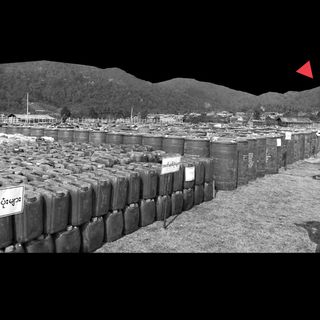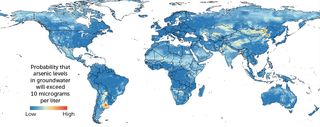A new global risk map points out alarming levels of arsenic in groundwater, putting up to 220 million people at risk. Arsenic is a naturally occurring chemical element and a metabolic poison, which — depending on the amount of consumption — can cause vomiting, stomach pain, brain disease, cancer, vascular disorders, nervous system disorders, and even death.
Though trace amounts of arsenic are found in most rocky regions, it can accumulate over time and cause adverse health effects. The groundwater arsenic levels in certain regions on the risk map exceeded 10 micrograms per liter, which is the World Health Organization’s (WHO) safety standard for drinking water.
According to the map, and accompanying research published in Science, areas exposed to higher than usual arsenic in groundwater are located in Central, South, and Southeast Asia; parts of Africa; and North and South America. However, the vast majority of areas exposed to arsenic contamination are in Asia (94%). India alone has almost 25 hotspots that could present risk for arsenic poisoning.
Global prediction of groundwater arsenic. by SCIENCE Journal
Related on The Swaddle:
Why We’re Not All Drinking Ocean Water Yet
India had lowered its limit for the amount of arsenic in safe drinking water from 50 to 10 µg/liter as recently as 2012, but 50µg/liter still remains permissible in the absence of all alternative sources of drinking water.
Researchers believe that the map should be used as a tool for increased arsenic testing around the world, but especially in regions that aren’t researched as often, such as Kazakhstan, Mongolia, and the Arctic. “Because groundwater is increasingly used to support growing populations and buffer against water scarcity due to changing climate, this work is important to raise awareness, identify areas for safe wells, and help prioritize testing,” wrote the researchers.





